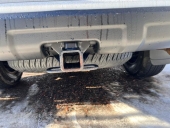


Caleb Mayfield wrote:I have a 40 foot High Cube shipping container on my property that has my shop in 15 feet of one end and storage in the rest.
For storage I built shelves on one side and install 24" deep pallet racking style shelves on the other side with a 48" aisle down the middle. You can also drill through the walls and bolt on boards like 2x6's to attach hooks or do a french cleat system.
Kevin Olson wrote:If you decide you really do need a truck, sometimes there are crazy good deals on medium duty trucks versus pickup truck prices, as well, especially if a bit of a project doesn't spook you.


Miles Teg wrote:
I haven't heard of anyone running air duct work through one of these things before though, which makes me wonder why.... I have either thought of something new, or something someone else has tried and it didn't work, that is the biggest worry at the moment.

Chi Monger wrote:
HEATPUMP MINISPLITS:
…
But for refrigerant?…
…Yes, they all (we entertained several contractors giving free estimates) …basically said it WILL leak (must have annual maintenance, incl. check refrigerant levels—of course that is another income-stream to the companies greedy for more profits).

Nina Surya wrote:
Ellendra Nauriel wrote:Run the plumbing in such a way that hot water going down the drain gives back at least part of its heat before it really leaves the house (not sure I'm phrasing that the right way).
Ellendra, I'm trying to come up with some kind of practical solution to what you said "Run the plumbing in such a way that hot water going down the drain gives back at least part of its heat before it really leaves the house ". I think you're phrasing it right but can you give an example of what, how...?






